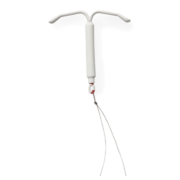Introducing LILETTA: A(nother) new IUD
More is totally merrier when it comes to IUD options. The latest addition is a hormonal IUD called LILETTA.

Update: LILETTA is no longer the newest IUD to hit the market. Another hormonal IUD, Kyleena, became available in 2016. Learn more about Kyleena and read the latest about LILETTA.
—
As the use of IUDs in the U.S. has gone up, so has the number of IUD options on the market. The latest to join the party is called LILETTA, and it will be coming soon to a health care provider near you.
Who can use LILETTA? And how well does it work?
Just like other IUDs, LILETTA is safe for most women to use. Important exceptions are women with an untreated uterine infection or women with breast, uterine, or cervical cancer.
The big study to measure LILETTA’s effectiveness included women with and without kids. That means the label says straight out that women without kids can safely use LILETTA. The study also included women of all shapes and sizes, so we know for certain that LILETTA works well for women of any weight.
Out of 100 women using LILETTA, less than one of them will have an accidental pregnancy in a year. That makes LILETTA one of the most effective birth control options, right up there with other IUDs and the implant.
How does LILETTA work?
Liletta works the same way as Mirena and Skyla, by releasing a steady, low level of the hormone levonorgestrel into the uterus. LILETTA releases about 19 micrograms per day for the first year, compared to about 20 micrograms per day with Mirena and 14 with Skyla. Most of the hormone stays in the uterus, but there is a measureable amount of it in the in the blood too (0.0002 micrograms per milliliter). All of these hormonal IUDs prevent pregnancy by thickening the cervical mucus and blocking sperm.
What about side effects and benefits?
The most common side effect of LILETTA is that one in five women stop having a period after a year of use. Depending on how you feel about periods, this could be a drawback or a serious benefit. Women in the study reported a variety of other side effects. The way the study was designed, we just don’t know which of them were caused by LILETTA versus being caused by something else. That said, the most commonly reported side effects included discomfort in the belly or pelvis (13%), acne (12%), headache (10%), nausea (8%), and breast tenderness (7%).
The most common risk was expulsion: about 4% of women in the study had an expulsion, which is similar to other IUDs.
How long does LILETTA last?
Like with all IUDs, a health care provider can remove LILETTA any time, for whatever reason. LILETTA contains a similar amount of levonorgestrel to Mirena and releases it at a similar rate. Both LILETTA and Mirena are FDA-approved to use for up to 8 years.
What will LILETTA cost and how can I get it?
Without any discount, LILETTA costs up to $684—about the same as Skyla—but there’s a very good chance you can get a discount. There are a number of ways people with and without insurance can get LILETTA for free or at a lower price. We’re not the only ones who are excited about this. In the words of Family Nurse Practitioner Patty Cason: “I am thrilled that the FDA has approved this new intrauterine contraceptive option, and that more women will have affordable access to this great birth control.”
For women without health coverage: If you don’t have health insurance, look for a Title X family planning clinic near you. These clinics offer sliding scale fees for their services, and they will be able to purchase the LILETTA IUD for only $50. That means they can pass the savings along to their patients. Contact your nearest Title X clinic to find out what LILETTA will cost for you.
For women with health coverage: LILETTA should be covered by insurance without a copay, just like other types of prescription birth control. Note that it may not be covered by insurance plans immediately, since it usually takes a few months for plans to get new drugs and devices on their list of approved treatments (called a “formulary”). For Medicaid plans, it can take up to a year to get new things on the formulary.
If you have health insurance but your plan still charges a copay or doesn’t cover birth control at all, LILETTA is offering a Patient Savings Program until December 31, 2017. Ask your health care provider if they are participating. The program only covers the IUD itself, not the cost of having the IUD inserted (usually between $150 and $250). Here’s how it works:
Before getting the IUD: Talk to your provider about getting a LILETTA Access Card. This is like a debit card that can only be used to purchase a LILETTA. It reduces the cost of the device to somewhere between $75 and $125, depending on the details of your health insurance plan. After your health care provider has written a prescription for the IUD and given you a card, you can use the card to pay for the IUD.
After getting the IUD: If you didn’t know about the Access Card and paid full price out-of-pocket for LILETTA, make sure you get an “explanation of benefits” (EOB) bill from your insurance company. Once you have the EOB, call 855-706-4508 to arrange a rebate of up to $500. The total rebate will depend on how much you paid for the LILETTA.
How do you feel about this article?

Heat up your weekends with our best sex tips and so much more.
